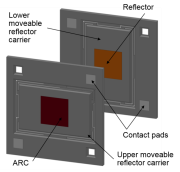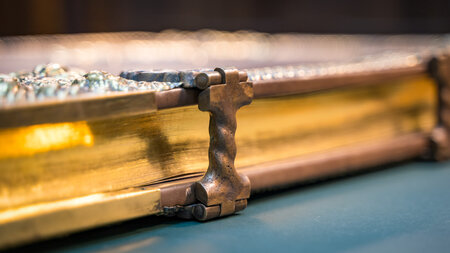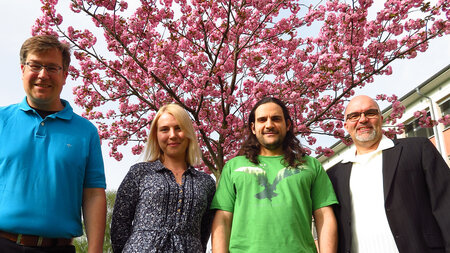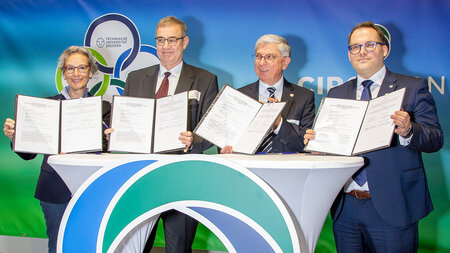Fabry-Pérot
Infrared spectroscopy is a powerful analysis method for both natural science and engineering. Microspectrometers based on MEMS Fabry-Pérot (FP) interferometers as optical band-pass filters are a recently emerging solution. The ZfM at TU Chemnitz and the Fraunhofer ENAS have been working on FP filters for tuneable IR detectors together with InfraTec GmbH Dresden and Jenoptik Optical Systems GmbH Jena for more than 10 years. The filters are aimed for gas analysis e.g. in medical diagnostics, especially the detection and monitoring of carbon dioxide and anesthetic gases, such as halogenated ethers and nitrous oxide, in respiratory gas. Therefore they are combined with an IR detector and integrated in a spectrometer set-up as shown in Fig. 1.
FP filters transmit and reflect electromagnetic waves of defined spectral ranges by multi-beam interference. They consist of an optical cavity as basic element, which is built between two parallel aligned and high reflective mirrors (Fig. 2). The electromagnetic waves enter the optical cavity through one of the mirrors and are reflected many times. They interfere and their amplitudes are attenuated or amplified depending on the phase difference. The transmitted wavelength is mainly influenced by the distance between the mirrors; by changing this gap size, e.g. with electrostatic forces, the filter can be tuned. As silicon is transparent in IR light, it can be used to build the reflector carriers as well as the electromechanical tuning system.
The reflectors in our approach are made of stacks of dielectric thin films and are optimized for high reflectance. Anti reflection coatings avoid reflection on the outer surfaces and hence increase the transmission light intensity. In the working range 3…5 µm, 5…8 µm and 8…12 µm the optimized dielectric stack mirrors consist of Ge (high refractive) and ZnS (low refractive) and a third material with low refractive index. These layers are deposited selectively by an ion assisted evaporation process (IAD), using a shadow mask technology.
Our latest design incorporates two equally sized, (especially nearly equal mass and stiffness), movable reflector carriers (2M design). Both reflector carriers are nearly equally deflected by the acceleration forces and the optical cavity length remains unaffected, which is particularly necessary for transportable spectrometers. The maximum control voltage for tuning the full wavelength range is significantly reduced in comparison to previous a design with one movable reflector carrier and a similar tuning range. The reflector carriers are designed with a small shape and rectangular footprint, and are connected to the chip frame by four equal, meander shaped, flexible suspensions. The upper and lower parts are assembled perpendicular to each other in order to form an overlapping area in the middle and further overlapping parts with the chip frame of the opposite substrate. For actuation, a voltage difference is applied between both substrates. The electric force is generated between a fixed part and the opposite moveable reflector carrier as well as between both moveable parts, and hereby the reflector carriers are displaced.
Bulk technologies are used to fabricate the filter elements. Dual band filters (1st/2nd order) for the spectral range 3…4 µm and 8…10.5 µm have been tested successfully. A high tuning range of 2800 nm was reached with a tuning voltage of only 41 V. The peak transmittance is >75% and the FWHM is <200 nm in the upper range and <100 nm in the lower range. For filters with 1M and 2M designs, operated in a spectral range 3.1…3.8 µm and in higher interference order (3rd or 4th), it is possible to reduce the bandwidth to 20…30 nm, and hereby to increase the resolution of the filters. It is also found that the 2M design can enhance the stability against vibration and gravitation by a factor of 2…6. Furthermore, the latest samples of silicon fusion bonded 2M filters show very low temperature coefficients of the transmission wavelength of -0.25… -0.85 nm/K.

|

|
Contact
Prof. Karla Hiller
Center for Microtechnologies
E-Mail:
karla.hiller@…




